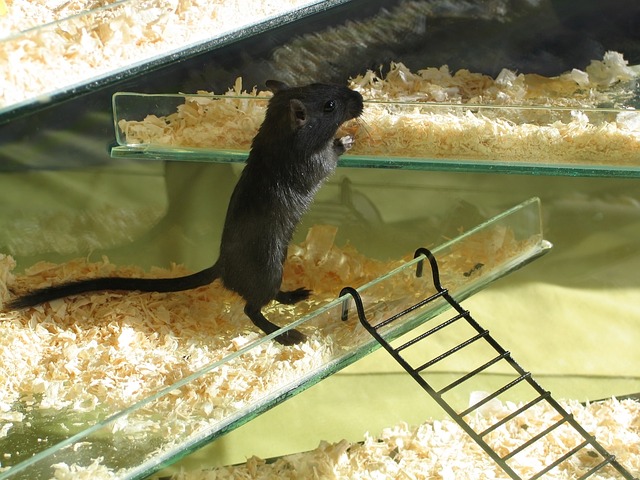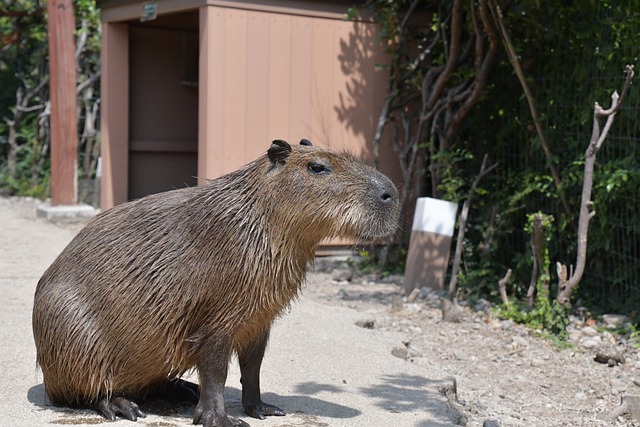Aspen bedding is a popular choice for many pet owners, but can it be used for rats?
The answer is yes, rats can use aspen bedding.
Understanding the benefits and potential issues of aspen bedding can help rat owners decide whether it is the right choice for their pets.
Aspen bedding is made from shredded aspen wood and is a popular choice for small animal bedding. It is absorbent, dust-free, and can help control odors.
For rats, aspen bedding provides a soft and comfortable surface for them to rest on and a material for them to burrow and play in.
However, it is essential to note that not all aspen bedding is created equal, and some brands may contain harmful additives or chemicals.
Key Takeaways
- Aspen bedding can be used for rats and provides a soft and comfortable surface to rest on.
- Aspen bedding is absorbent, dust-free, and can help control odors.
- Choosing a high-quality aspen bedding brand is essential to avoid harmful additives or chemicals.
Why Choose Aspen Bedding for Rats
Aspen bedding is popular for rat owners due to its many benefits. Here are a few reasons why you should consider using aspen bedding for your rats:
Absorbent
Aspen bedding is highly absorbent, which makes it great for controlling odors and keeping your rat’s living space clean. It can absorb up to four times its weight in moisture, which means that it will stay dry for longer periods.
Dust-Free
Aspen bedding is dust-free, which makes it an excellent choice for rats with respiratory issues. Unlike other types of bedding, aspen bedding won’t create a lot of dust when used, so your rats won’t be exposed to harmful particles.
Safe
Aspen bedding is safe for rats, containing no harmful chemicals or toxins. This means you can feel confident that your rats won’t be exposed to anything that could harm their health.
Affordable
Aspen bedding is also an affordable option for rat owners. It’s widely available and can be purchased in large quantities to save money in the long run.
Overall, aspen bedding is an excellent choice for rat owners looking for a safe, affordable, and effective bedding option. Aspen bedding can help keep your rats healthy and comfortable with its absorbent and dust-free properties.

Aspen Bedding Benefits for Rats
Aspen bedding is a popular choice for rat owners. This section will outline the benefits of using aspen bedding for rats, including odor control, comfort, and health benefits.
Odor Control
Aspen bedding is known for its ability to control odors. It is made from the wood of aspen trees, a natural deodorizer. This means it can help absorb and neutralize the smells of rats.
Comfort
Aspen bedding is also a comfortable option for rats. It is soft and fluffy, providing a cozy and warm environment for rats to sleep and play.
Additionally, aspen bedding is less dusty than other types of bedding, which can benefit rats with respiratory issues.
Health Benefits
Aspen bedding can offer health benefits for rats as well. It is free from aromatic oils, which can be harmful to rats.
Additionally, aspen bedding is less likely to cause skin irritations or allergies in rats than other bedding types. This makes it a safer and healthier option for rats.
Overall, aspen bedding is an excellent choice for rat owners who want bedding that is comfortable, odor-free, and safe for their pets.
Potential Issues with Aspen Bedding
Aspen bedding is popular for rat owners due to its affordability, absorbency, and low odor. However, some potential issues exist before using aspen bedding for pet rats.
Dustiness
One of the main concerns with aspen bedding is its potential to create dust.
Dust can cause respiratory issues in rats, especially those with pre-existing conditions such as asthma.
While aspen bedding is generally less dusty than other types of bedding, monitoring your rats for any signs of respiratory distress is still essential.
To minimize dust, it is recommended to sift through the bedding before placing it in the cage and avoid using a fan or vacuum near it.
Additionally, it is essential to keep the cage clean and well-ventilated to prevent the buildup of dust and ammonia.
Allergies
Another potential issue with aspen bedding is the risk of allergies. Some rats may be allergic to aspen or other types of wood, which can cause skin irritation, itching, and hair loss.
It is essential to monitor your rats for any signs of allergies and to switch to a different type of bedding if necessary.
To minimize the risk of allergies, it is recommended to introduce aspen bedding gradually and to monitor your rats for any signs of skin irritation or itching.
Additionally, it is essential to provide your rats with a balanced diet and keep their cage clean and well-ventilated to prevent the buildup of allergens.
Overall, aspen bedding can be a safe and practical choice for rat owners, but it is essential to be aware of the potential issues and to take steps to minimize any risks.
By monitoring your rats for signs of respiratory distress or allergies and keeping their cage clean and well-ventilated, you can help ensure your pets stay healthy and happy.
How to Use Aspen Bedding
Aspen bedding is an excellent choice for rat owners. It is affordable, easy to find, and safe for rats to use. Here are a few tips on how to use aspen bedding with your rats:
1. Choose the Right Type of Aspen Bedding
Choosing a high-quality product is essential when selecting aspen bedding for your rats. Look for bedding made from pure aspen wood without any additives or chemicals. Avoid bedding containing pine or cedar, as these woods can harm rats.
2. Prepare the Cage
Before adding aspen bedding to your rat’s cage, make sure the cage is clean and dry. Remove old bedding, food, and litter, and wipe down the cage with a mild disinfectant. Allow the cage to dry completely before adding new bedding.
3. Add the Aspen Bedding
Once the cage is ready, add a layer of aspen bedding to the bottom of the cage. The bedding should be at least 2-3 inches deep to provide your rats a comfortable and safe environment. Avoid overfilling the cage, as this can make it difficult for your rats to move around.
4. Monitor the Bedding
Check the aspen bedding regularly to make sure it is dry and clean. Remove wet or soiled bedding and replace it with fresh bedding as needed. Look for any signs of illness or injury in your rats, and seek veterinary care if necessary.
Using aspen bedding can help keep your rat’s cage clean, comfortable, and safe. Proper care and maintenance allow your rats to enjoy a happy and healthy life in their new home.
Alternatives to Aspen Bedding
While aspen bedding is a popular choice for rat owners, several alternative options can also provide a comfortable and safe environment for rats.
Paper-Based Bedding
Paper-based bedding, such as Carefresh or Yesterday’s News, is a popular alternative to aspen bedding. This bedding is made from recycled paper and is highly absorbent, making it a good choice for frequent urinating rats.
Paper-based bedding is also dust-free, which can benefit rats with respiratory issues.
Fleece Liners
Fleece liners are another option for rat bedding. These liners are made from soft, absorbent fleece material and can be easily washed and reused. Fleece liners are a good choice for owners who want a more eco-friendly option, as they can be used multiple times before needing to be replaced.
Hemp Bedding
Hemp bedding is a newer option that is becoming more popular among rat owners. This type of bedding is made from the fibers of the hemp plant and is highly absorbent and dust-free. Hemp bedding is also biodegradable and compostable, making it a good choice for eco-conscious owners.
Corn Cob Bedding
Corn cob bedding is another option for rat bedding. This type of bedding is made from ground corn cobs and is highly absorbent. Corn cob bedding is also dust-free and can be a good choice for rats with respiratory issues.
However, it should be noted that corn cob bedding can be dusty when first poured, so it is essential to allow it to settle before introducing rats to their new bedding.
Several alternatives to aspen bedding can provide a comfortable and safe environment for rats. Owners must consider their rat’s needs and preferences when choosing a bedding option.
Conclusion
In conclusion, aspen bedding can be a suitable option for rats. While it may not be as absorbent as other types of bedding, it is still effective in controlling odor and providing a comfortable living space for rats. Additionally, aspen bedding is a natural and relatively inexpensive option, making it an attractive choice for many rat owners.
It is important to note that aspen bedding should be changed regularly to maintain a clean and healthy environment for rats. While aspen bedding is less likely to cause respiratory issues than other types of bedding, rats may still be sensitive to dust and allergens. Therefore, monitoring your rat’s health and behavior when introducing new bedding or changing their living environment is recommended.
Overall, aspen bedding can be an excellent option for rat owners looking for a natural and affordable bedding option. However, it is essential to consider your rat’s needs and preferences when choosing a bedding type.









